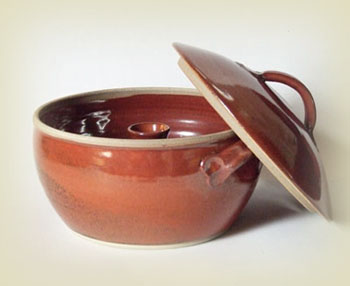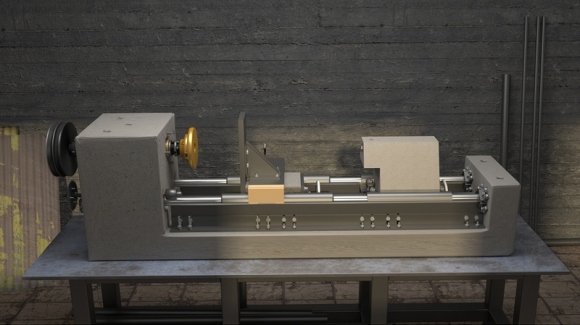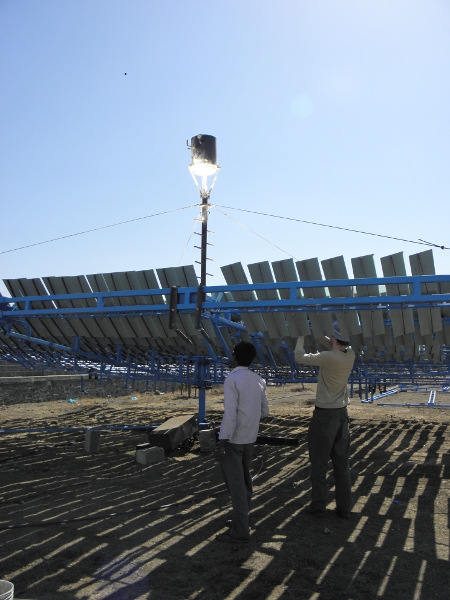Steaming food (vegetables as well as fish, meat and rice) is an interesting cooking method, mainly for two reasons: contrary to frying there is no need to use fat, and compared to both frying and boiling less nutrients are lost.
 Almost all food steamers or steam cookers on the market work by virtue of many little holes, through which the steam rises from the boiling water below. The disadvantage of this method is that you lose the bouillon of the food, as well as the spices you might add.
Almost all food steamers or steam cookers on the market work by virtue of many little holes, through which the steam rises from the boiling water below. The disadvantage of this method is that you lose the bouillon of the food, as well as the spices you might add.
When I visited my cousin last week in the French Dordogne, I stumbled upon a ceramic steamer in her kitchen. It was hand made by Laurent Merchant, an artisan living and working in the region. Ceramic food steamers are everything but new — they were already used in Neolithic China 6 to 7000 years ago* — but this one was different. Just like any other steam cooker, it is placed above a pot with boiling water. However, the steam enters through a central chimney rather than through dozens of little holes. The obvious advantage is that you don’t lose the juice, which greatly increases the potential uses of steaming.
Some commercially available steamers feature a condensation catchment, but in that case you can only use the bouillon separately, or add it to the food later. Furthermore, the ceramic steamer offers several additional advantages. Its design allows you to easily warm up earlier made dishes or leftovers following the same cooking method, because the device also serves as a perfect storage container and the steam prevents the food from drying out or sticking together. The steam cooker is also particularly suitable for defrosting food, and it is much easier to clean than conventional devices. Last but not least, it is made from sustainable materials and looks great, which cannot be said of most plastic food steamers.
Laurent Merchant did not invent the device, which he dubbed “Le steamer”. Ceramic steamers with a central chimney originated in China, where they might have been in use for many centuries in the region around Shanghai. They resurfaced in California in the 1970s, where the artisan saw them for the first time. I could not find any information on their history, but in 2007 Merchant stumbled upon an authentic Chinese specimen which he could photograph (picture on the right — more pictures here).
“Le steamer” is available in different sizes (from 1 to 4.5 litres) and can be ordered online. Laurent Merchant’s website is in French, but he will answer your questions in perfect English.
* Joseph Needham, Science and Civilisation in China, Volume 5, part 5: fermentations and food science, page 76-91








